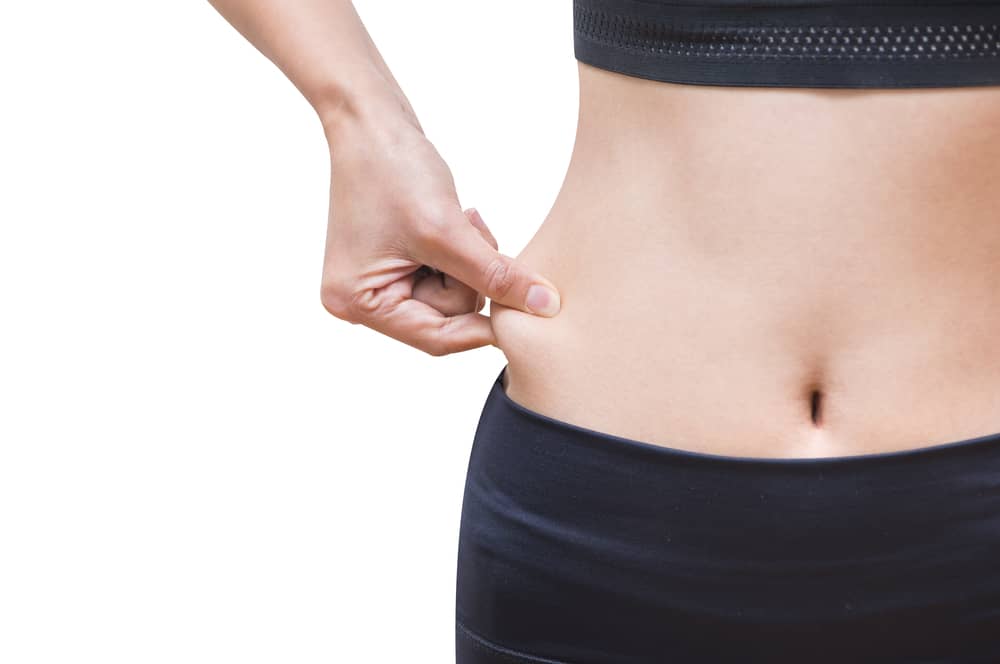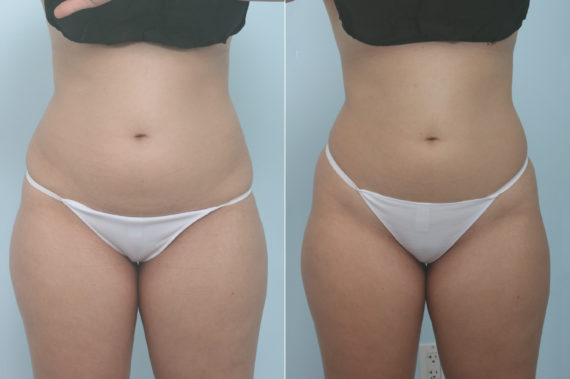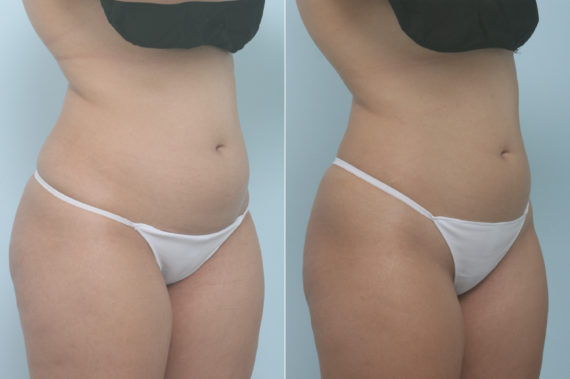
If you were looking to lose weight, your doctor would most likely prescribe a strict diet and exercise regimen. This is ideal of course, but what if you aren’t interested in losing weight generally as much as you are in shedding stubborn fat in specific areas of your body where dieting and exercise are not likely to adequately target?
Over the years, a number of convenient treatments have been developed for ‘sculpting’ the body – removing excess and unwanted fat from such “hidden” areas. These treatment procedures employ varying technologies, from invasive liposuction to cryolipolysis, radiofrequency, laser energy, suction, and ultrasound. To gain wider acceptability, these methods of fat reduction have been increasingly made more non-invasive and work by destroying fat cells under the skin which are then removed from the body.
These fat treatment methods have good safety profiles and are FDA approved with very minimal associated side effects or complications. While there are various advantages to the different methods of fat reduction, CoolSculpting appears to trump the others in a number of ways.
What is Coolsculpting?
Coolsculpting is a non-invasive method of fat reduction that uses extremely cold temperatures to destroy excess subcutaneous fat from unwanted areas of the body. The fat cells are broken down into smaller molecules that allow the body to naturally absorb them and then slowly remove them from the system with time. Only the CoolSculpting device is needed for this procedure, requiring no anesthesia, needles, or surgical incisions.
Also, as there is little to no associated downtime and minimal side effects, recovery is fast enough to allow for other procedures to be undertaken if desired.


What are other non-invasive methods of fat reduction?
There are several non-invasive options for fat removal each with peculiar merits and otherwise.
• SculpSure: this involves the use of lasers. It is similar to CoolSculpting but instead of using cooling, it uses a laser to destroy the fat cells.
The device is wrapped around the body and delivers laser energy that when it reaches a certain temperature, is able to destroy the adipose cells.
• Vanquish: this non-invasive method uses radiofrequency energy to destroy unwanted fat cells and contour the body areas desired. It works best for areas where fat is evenly distributed over the body.
The emitted radiofrequency energy heats the skin overlying the targeted areas to a temperature that ultimately kills the fat cells, allowing the body’s lymphatic system to do the cleanup thereafter.
• Laser Liposuction: also referred to as laser lipolysis, this minimally invasive method involves the use of a laser to destroy the fat cells after which a suction device is used to remove the destroyed cells.
It can be performed in the doctor’s office and a cannula and local anesthesia are often required. A small incision is made through which the laser device is passed which liquefies the fat. Following this, a cannula is inserted to suck out the melted fat.
There is often a few days of downtime required for a full recovery.
• Ultrasonic fat cavitation: this procedure utilizes high-frequency sound waves/energy to turn the fat into liquid. Thereafter, the body’s lymphatic system clears the dead cells.
A handpiece is used to direct the sound waves onto the targeted areas of desired fat removal.
Coolsculpting VS Other Methods of Fat Reduction
CoolSculpting vs SculpSure:
Although the two procedures are similar in many ways in terms of cost, being non-invasive, having short recovery, and minimal downtime, they differ in terms of the temperature at which the fat tissues are destroyed.
Whereas CoolSculpting utilizes cold temperature to freeze the cells earmarked for destruction, SculpSure breaks the fat cells down using hot laser panels. The lasers heat up the fat cells through the skin, causing them to die. In both methods, the body naturally clears up the dead cells over time.
While they may have comparable efficacy, CoolSculpting has however been around for a longer period of time and so has recorded more success, especially regarding reported patient satisfaction.
Also, whereas CoolSculpting uses a rounded instrument, making it more suitable for fat deposits in uneven parts of the body, SculpSure is more suited for people who are thin with evenly distributed fat as it uses flat panels.
CoolSculpting vs Vanquish:
Vanquish involves the use of radiofrequency to destroy fat cells. With this method, unlike coolsculpting, the individual is required to lie beneath the device which then determines the precise amount of energy needed to burn the fat deposits for the best results.
Individuals with metal implants located in the desired areas of treatment are not allowed to undergo the Vanquish procedure. This, on the other hand, is not a concern with CoolSculpting.
In terms of the surface area of treatment, vanquish can target larger areas of the body like the entire abdominal area at once unlike CoolSculpting which treats a smaller area at a time. These give vanquish a smoother finish, unlike CoolSculpting which may sometimes leave a lumpy-looking finish.
Nevertheless, CoolSculpting has been around for longer and has more positive results to its name.
CoolSculpting vs laser liposuction:
Both procedures are roughly similar in terms of cost, duration, efficacy, safety as well as convenience.
They however differ in the way they work. Whereas laser liposuction involves the use of a laser to liquefy the fat, CoolSculpting involves the use of an applicator to freeze the undesired fat.
In addition, laser liposuction gives more immediate results compared to CoolSculpting, although the former is more invasive and may require a few days of downtime before the resumption of normal activities.
In terms of duration of the procedure, laser liposuction takes about one hour per area while CoolSculpting lasts for about 35 minutes per area, making coolsculpting a preferred choice for those who love to get things done as quickly as possible.
CoolSculpting vs Liposuction
There are remarkable differences between these two methods of fat reduction. Whereas CoolSculpting is a non-invasive procedure, Liposuction is a minimally invasive procedure that requires anesthesia and surgical incision to be made. For these reasons, liposuction might be reasonably expected to carry the bigger risk from anesthesia, as well as a longer recovery time and downtime. From a more practical perspective, if it takes a person a few hours to recover from a CoolSculpting session, it would take the same person several days to recover from a liposuction procedure.
In terms of treatment duration, liposuction takes an appreciably longer time to complete. Both procedures may cost about the same amount however, even though liposuction being a surgical procedure, is slightly more expensive than CoolSculpting, especially considering the fact that CoolSculpting might require more than a single treatment session.
The fact that liposuction involves surgical incisions and the use of anesthesia leaves it with a bigger side effect probability such as infection, scars, puncture wounds to internal organs, fluid accumulations, and discoloration of the skin. CoolSculpting on the other hand is associated with only minor side effects like numbness, tingling sensation, minor and temporary bruising, and swelling.
CoolSculpting vs ultrasonic fat cavitation:
These two procedures differ in a number of ways, chiefly in the number of treatments required, comfort, and associated side effects.
The ultrasonic fat cavitation technique needs fewer treatment sessions to produce optimal results compared to coolsculpting. Since the ultrasonic waves easily liquefy the fat for the lymphatic system to clear off, results are apparent a lot faster, unlike the CoolSculpting technique which typically requires a relatively long time to see results.
Comfort-wise, the ultrasonic fat cavitation is more comfortable as it is relatively devoid of the numbing and the tingling sensation that is more often a side effect of the CoolSculpting technique. Also, the ultrasonic fat cavitation procedure requires a shorter recovery time and generally costs less than CoolSculpting.
Both methods are, however, safe and effective, providing relatively stress-free and desirable results.
Generally, CoolSculpting is a more popular choice and has been around for much longer. Oftentimes, the choice of treatment depends on personal circumstances, budget and preferences.